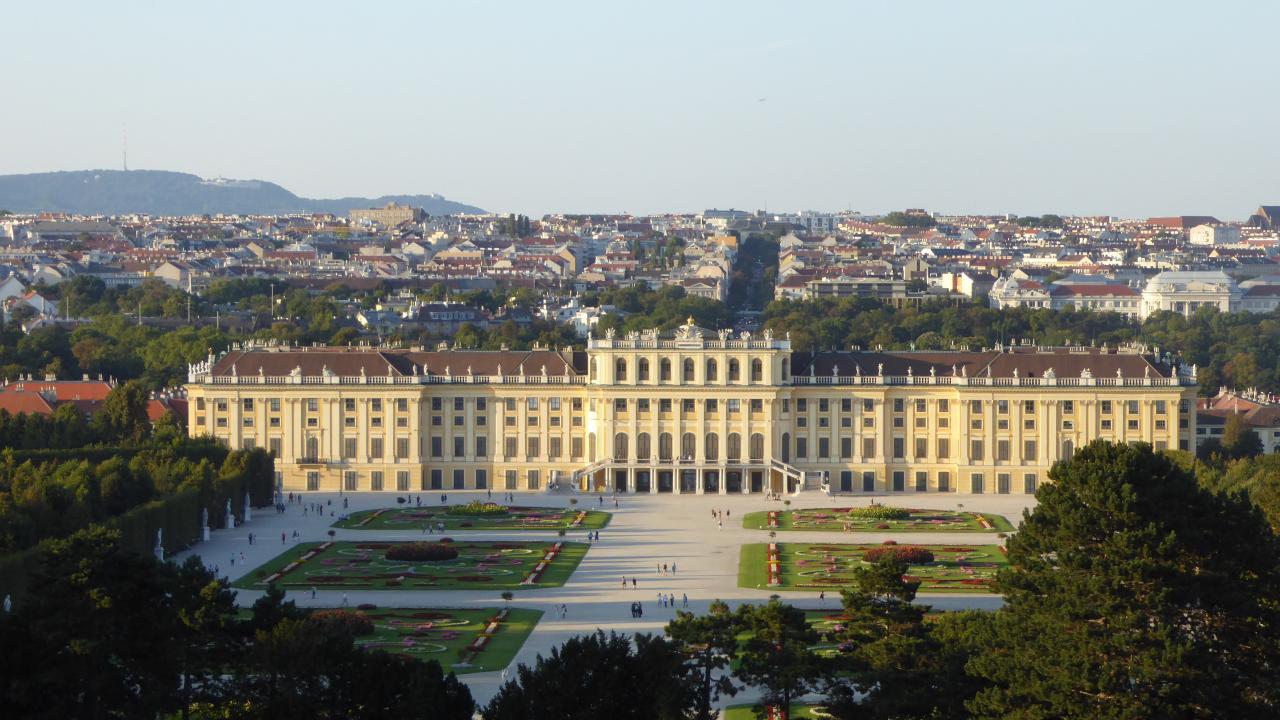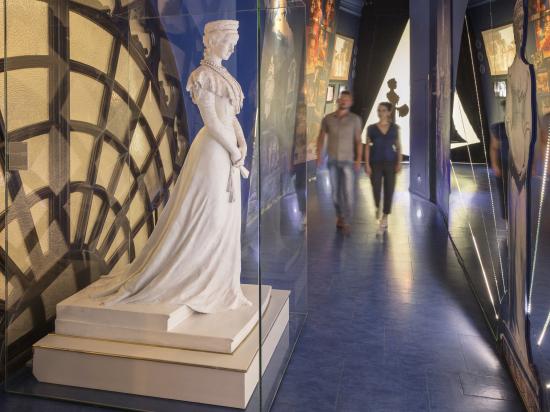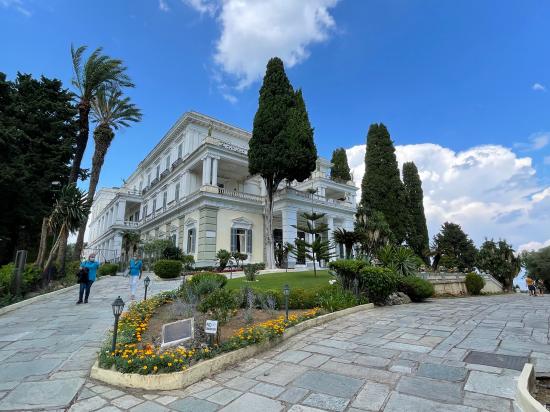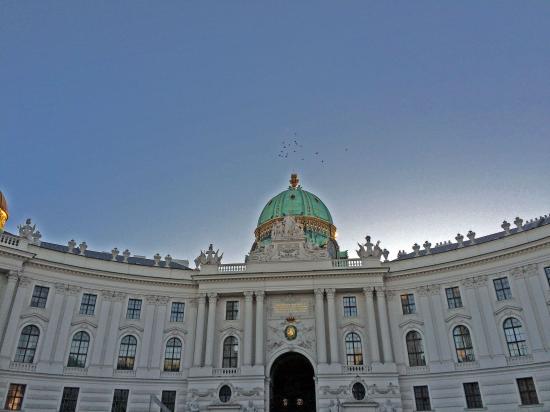A visit to the Habsburgs
The fascinating world of the Habsburgs
The Imperial Apartments, the Sisi Museum and the Silver Room in the Vienna Hofburg, the UNESCO Cultural Heritage Schönbrunn Palace with its park and zoo, the Festival Palace Hof and the Court Furniture Depot provide fascinating insights into the multi-faceted history of the monarchy as well as the daily life at the imperial court with thematic walking tours, special exhibits, and individual focal points.
One of the main attractions of Vienna is the magnificent Ring Avenue with its huge building complex, the Hofburg. The imperial residence has undergone several expansions and revisions over the time and was the centre of European power up to the beginning of the 20th century. It was from this palace that Emperor Franz Joseph, whose reign lasted 68 years, decided the fate of the Danube monarchy. The multinational state at the time was eight times as large as the present Austria.
With one single entrance ticket three different worlds of the Habsburg reign can be experienced: In the Imperial Apartments of the Hofburg, which nowadays houses the official offices of the Austrian Federal President, the Emperor’s family once spent the cold winter months. Today it is possible to visit the lodgings of the Kaiser and his wife Elisabeth (Sisy), which have been carefully maintained in their original state. Since time was a premium, also for rules of this period they also include semi-official rooms for audiences, conferences and offices. Two separate bedrooms reveal that at a certain point in time the legendary imperial couple no longer wished to share one bed. The beauty routine of Sisi, who was considered one of the most beautiful women, is reflected in her washroom and her exercise room. At the time it was considered revolutionary that an empress would have her own bathroom. Dining, taking tee, or eating breakfast took place in further chambers of the palace.
The immediately adjacent Sisi Museum is dedicated exclusively to the life and the legends surrounding the beautiful empress. After enjoying a free and unfettered childhood Sisy was made the fiancée of Kaiser Franz Joseph at 15. Later, at the court she resisted the required rigid rules of behaviour and abhorred court intrigues. Her escape from these constraints took the form of a beauty and body cult that could hardly have been more extreme. After the suicide of her son she wore exclusively black. In 1898 she became the victim of an assassination. Her tragic and mythically exaggerated figure exudes to this day an ambivalent fascination. Among others, the legend is fortified by the ”Sissi” film trilogy with Romy Schneider that is defined in the encyclopaedias as ”regal kitsch” but is nevertheless so popular that it is shown on television every year at Christmas.
The Silver Chamber of the Hofburg displays a complete overview of the table manners and protocol of the monarchs. Numerous huge kitchen utensils are testimony to the amount of effort that went into cooking for 5,000 persons at the court. The craftsmanship of the royal purveyors by appointment is reflected in the delicate glass series, elaborately designed table service and silverware. Even the serviettes designed for festive meals can be admired. Some of the most exquisite pieces of tableware demonstrate that a gift of luxurious dining arrangements was common practice among rulers. Collecting porcelain was widely popular, whereby Asian objects were especially prized.
The most visited tourist attraction and true landmark of Vienna is Schönbrunn Palace. First erected as a hunting lodge with a large park, it was expanded to its present size from the middle of the 18th century and became the summer seat of the government and summer residence of the imperial family and the court. By the middle of the 19th century the palace and all auxiliary buildings were painted in ”Schönbrunn yellow” that eventually became the trademark of the Habsburg monarchy. The entire ensemble with the palace, the park grounds with numerous fountains and statues, as well as the oldest still operating zoo in the world, was declared a UNESCO World Heritage Site.
Through the widely branching rooms of the palace many walking tours, longer or shorter, are possible. One can see the private rooms as well as the more representative and elaborately appointed public rooms. Among these are the apartments of Emperor Franz Joseph and his wife Elisabeth (Sisi) from the second half of the 19th century as well as the splendid apartments of Empress Maria Theresa from the 18th century that were appointed in Rococo style one hundred years earlier. The impressive heart of the palace, the grand gallery, is transversed on every tour. This is where balls, receptions and other court functions took place. Every chamber, every hall of the palace can tell a story — about life style and philosophy of the time.
Our journey now takes us a few decades back from the Rococo to the Baroque. The festival palace Schloss Hof, a short hour’s journey from Vienna beckons us to this period in the history of art. The former festival palace is a matchless ensemble of magnificent architecture and master gardening. With fastidious attention to detail this Baroque synthesis of art gives a completely new and contemporary view into a bygone world. Schloss Hof was conceived as a retreat, representative hunting lodge and opulent location for large festivals. The renovation begun in 2002 is considered to be one of the most ambitious revitalisation projects in recent history. With the help of old plans, inventory lists and paintings, the original beauty of the palace and its accompanying dairy farm, a kind of self-sufficient agricultural facility, was restored. Plants and animals of the time were also brought back to life. Some of the species of flowers are more than 200 years old and the kept animals represent the favourite animal races of the Baroque such as white donkeys and Carinthian sheep. The interior rooms of the palace open new windows into the world of Baroque. The palace offers a unified impression of the life style of another era. To fully take in this experience you will need at least half of a day.
Wonderful insights into the history of domestic life at the court are presented by the Viennese Hofmobiliendepot (court furniture depot). Originally founded to store the furniture of Empress Maria Theresa, the Hofmobiliendepot has advanced to become the largest furniture collection in the world. The German name, incidentally, derives from the concept of mobility, ”Mobilien,” as opposed to ”Im-mobilien” referring to real estate, i.e. that which does not move. And, in fact, the furniture was moved when the Kaiser moved from his summer residence to his winter residence or when he travelled — the furniture travelled with him. The main emphasis of the collection is the former original pieces of the furniture of the Habsburgs from Schönbrunn palace, the Hofburg, Belvedere palace, Laxenburg palace and Schloss Hof. The collection not only gives us a unique perspective into the world of imperial furnishings but an overview of the development of Austrian furniture design in the 20th century with exponents by Roland Rainer, Franz West or Margarete Schütte-Lihotzky.
Imperial Locations in Austria
Kaiserappartements, Sisi Museum, Silberkammer
www.hofburg-wien.at
Schloss Schönbrunn with park
www.schoenbrunn.at
Tiergarten Schönbrunn (zoo)
www.zoovienna.at
Festschloss Hof (festival palace)
www.schlosshof.at
Hofmobiliendepot (court furniture depot)
www.hofmobiliendepot.at
Kaisergruft
www.kaisergruft.at
Lainzer Tiergarten
www.lainzer-tiergarten.at
Wien Museum Hermesvilla
www.wienmuseum.at
Museum der Stadt Bad Ischl
www.stadtmuseum.at
Kaiservilla
www.kaiservilla.at
Jagdschloss Eckartsau
www.schlosseckartsau.at
Schloss Laxenburg
www.schloss-laxenburg.at
At a glance:
www.imperial-austria.at





